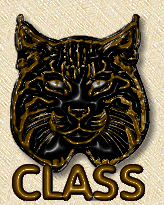Turkish Van
Temperament:
*Self-Possessed
*Highly Intelligent
*Very Independent
*Playful
"Vans are affectionate with their owners- but they remain the boss."
The Turkish Van's purrsonality is a match for its strikingly unique looks. It is highly
intelligent, very independent, has a soft voice "like little bells" and is
described as being "proud and brave as a lion". For the right owner, the
long-lived Turkish Van is an excellent, loyal, and loving companion. |
| Head: Broad, tapering to a wedge; long nose, pink nose pad |
| Eyes: Almost round; large, expressive; yellow to amber, but sometimes blue
or odd eyed |
| Ears: Large, pointed; very wide set; tufted; pink on the inside |
| Body: Medium size; broad chest; powerful; muscular; long |
| Coat: Semi-long; silky; no wooly undercoat; coat may be short in summer |
| Tail: Long, brushy, feathery |
| Patterns: Usually solid white body with auburn markings, although other colors
are being developed |
Breed History: The Turkish Van looks like the Angora's big brother- with a
difference. Like the Angora, the Van has a long, soft, silky coat and a winsome pointed
face. And like the Angora, the Van (sometimes called the "swimming cat") enjoys
playing in the water. But unlike the Angora, the Van, which comes from the area around
Lake Van in Eastern Turkey, is not a delicate fine boned cat: it is extremely sturdy, with
a muscular build. Its coat markings are so unique that they are called simply "The
Van Pattern": an auburn tail and matching auburn patches on its forehead
and an
otherwise all white body.
An ancient legend explains the Van markings this way: as white Van cats left Noah's Ark
after the flood, Allah reached down to touch them. Auburn patches appeared on the cats and
remain there as a sign of his blessing. But Van cats have a long history outside of
legend. The Louvre museum in France contains Roman drawings of cats that look like the
Van.
It wasn't until 1955 that the Van became known outside Turkey, when two British
photographers brought home a pair of kittens. These unique and attractive cats bred true,
and after an extensive breeding program Turkish Vans were finally accepted for
championship in England in 1969 and 16 years later in the U.S. |
| Additional Notes: |

|
|

|
|

|

|

|
|